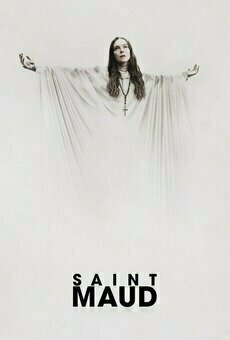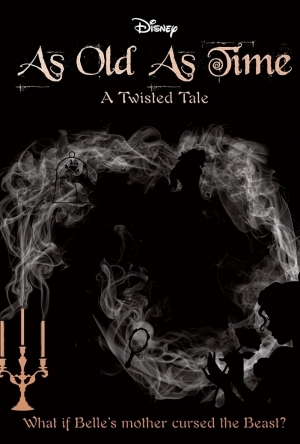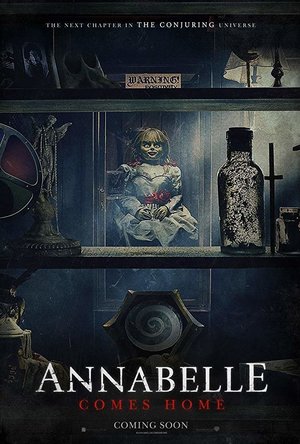Search
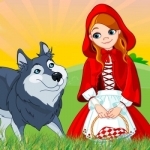
200 Fairy Tales for Kids - The Most Beautiful Stories for Children
Lifestyle
App
——————————————— 200 Fairy Tales for Kids...
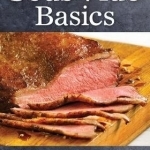
Sous Vide Basics: 100+ Recipes for Perfect Results
Jay Nutt and Jennifer Mackenzie
Book
Take a cue from chefs and take the guesswork out of preparing meals with this ingenious appliance....
Lee (2222 KP) rated Saint Maud (2020) in Movies
Oct 6, 2020
Saint Maud is a psychological horror about a young nurse (Morfydd Clark) who, following ‘an incident’ while working for the NHS, something horrific that is alluded to in the opening scene, now finds herself working in palliative care.
Maud is a lonely, isolated, and very religious young woman, and as she sits in her sparse little bedsit, she prays to God in the hopes that he will guide her as she begins her new role. That new role sees her taking over as carer for Amanda (Jennifer Ehle), an ex-dancer whose body is now succumbing to terminal cancer. As Maud feeds, bathes and generally does everything for Amanda, her obsession with her faith and religion begins to send her into a downward spiral, becoming increasingly convinced that her personal mission from God is to save Amanda's soul. Amanda’s lifestyle choices and love-life are often at odds with Maud’s beliefs, eventually resulting in tensions between them.
'In my head, she's very much this person who has felt really alienated her entire life and has always found it really difficult to connect with other people,' explains British director Rose Glass about the lead character of her feature-length debut. Morfydd Clark fills that role brilliantly, with her calm and innocent voice narrating much of the film through her prayers, and we experience her failed attempts at connecting with others while on a rather heavy and eventful night out on the town. An ominous score also helps to set the tone, along with a rather gloomy colour palette, and there is a general feeling of dread throughout.
Aside from that, it’s fair to say that Saint Maud really didn’t work for me at all. I was fully invested in the character of Maud, how faith was shaping her, and how her relationship with Amanda was affected. But two thirds into this slow-burn character study of a young woman essentially going through a breakdown, I was bored and desperate for something to happen. Considering the runtime is only 84 minutes long, that’s not good.
A last-minute burst of chaos and horror provided a glimmer of hope but was very short-lived. And an attempt to deliver powerfully, memorable imagery only resulted in laughs from my cinema audience the likes of which I haven’t experienced since the ending of Hereditary.
Maud is a lonely, isolated, and very religious young woman, and as she sits in her sparse little bedsit, she prays to God in the hopes that he will guide her as she begins her new role. That new role sees her taking over as carer for Amanda (Jennifer Ehle), an ex-dancer whose body is now succumbing to terminal cancer. As Maud feeds, bathes and generally does everything for Amanda, her obsession with her faith and religion begins to send her into a downward spiral, becoming increasingly convinced that her personal mission from God is to save Amanda's soul. Amanda’s lifestyle choices and love-life are often at odds with Maud’s beliefs, eventually resulting in tensions between them.
'In my head, she's very much this person who has felt really alienated her entire life and has always found it really difficult to connect with other people,' explains British director Rose Glass about the lead character of her feature-length debut. Morfydd Clark fills that role brilliantly, with her calm and innocent voice narrating much of the film through her prayers, and we experience her failed attempts at connecting with others while on a rather heavy and eventful night out on the town. An ominous score also helps to set the tone, along with a rather gloomy colour palette, and there is a general feeling of dread throughout.
Aside from that, it’s fair to say that Saint Maud really didn’t work for me at all. I was fully invested in the character of Maud, how faith was shaping her, and how her relationship with Amanda was affected. But two thirds into this slow-burn character study of a young woman essentially going through a breakdown, I was bored and desperate for something to happen. Considering the runtime is only 84 minutes long, that’s not good.
A last-minute burst of chaos and horror provided a glimmer of hope but was very short-lived. And an attempt to deliver powerfully, memorable imagery only resulted in laughs from my cinema audience the likes of which I haven’t experienced since the ending of Hereditary.
Lottie disney bookworm (1056 KP) rated As Old As Time in Books
Aug 16, 2019
Review by Disney Bookworm
I’m going to come right out and say (although you will probably be able to tell if you make it to the end of this blog) that this is, so far, my favourite book in the twisted tale series. Seriously, this is the second time I have read it and I loved it just as much as the first time. I got just as engrossed in the story and I seriously think Liz Braswell and I could be best friends!
As Old As Time is the retelling of Beauty and the Beast and opens with the familiar story of the enchantress and the young, vain prince that we all know. You can probably still picture the stained-glass scene from the original 1991 movie and the dramatic ballroom scene in the 2017 remake.
Refusing to be eclipsed by these though, Braswell follows the well-known tale with: “It was a very good story. It often entertained the woman who lay in her black hole of a room, manacled to a hard, cold bed.”
Wait! What?
There, with one fell swoop, on the second page, Braswell brings an almost gothic darkness to the fairy tale. Of course, some would say it is already dark: very few people who are cursed to become a beast are particularly jolly about the situation! However, Braswell goes one step further by both revealing the story behind the enchantress and taking us on a journey to discover the ugly truth in the present.
Liz Braswell creates a kingdom where magic and non-magic people have lived together peacefully for years but where politics and a lack of cultural understanding is threatening to tear that apart as les charmantes find themselves persecuted by les naturels. (I can’t imagine where she draws her inspiration from(!))
It is in this kingdom that we meet a young dreamer called Maurice and the enchantress Rosalind, Belle’s mother (nicknamed Rose- so clever!). Maurice is very much a younger version of the character we grew up with: loveable and devoted to his inventions. Rosalind however is much more headstrong and impulsive: even changing her appearance on a whim. Her pride is fierce and we first meet her holding her own against a large man insulting ‘her kind’, calling her unnatural and a child of the devil. The bully soon learns the error of his ways when his nose is replaced by a pig’s snout but a warning runs all the way through this tale: “magic always comes back on itself”.
Maurice and Rosalind’s life is happy and settled at first but they soon start to witness the persecution of les charmantes for themselves. Thus, when the King and Queen call on Rosalind to protect them against the advancing plague, she passionately fights for her people…only to be rejected and turned away. Maurice, always the voice of reason, convinces Rosalind to at least protect the children and servants and so it comes to pass that Rosalind later visits the young prince, on the eve of his coronation, carrying with her the simple gift of a rose.
Braswell’s character development is, as always, impressive. Belle is immediately relatable as the kooky bookworm we know and love: her story running parallel to the film until we, as readers, develop a relationship with her parents. It is then that we discover there is a slight edge to Belle. Although clearly tortured by the fact her mother cursed a 10-year-old boy, Braswell’s Belle is desperate to be adventurous and heroic like the characters in her books but soon realises an adventure is not all it is cracked up to be. Like her mother, Belle can be quite impulsive: grabbing the enchanted rose before the beast can stop her and destroying any chance of breaking the spell. However, she is also quick and cunning, tricking the wardrobe into revealing the curse’s timeline. Nevertheless, the bravery of our protagonist can never be doubted and Belle embarks on one hell of a journey to discover the truth about her family and herself.
Uniquely, within As Old As Time we slowly see side-line characters weave their way into the lives and stories of our characters. Levi and Alaric, for example, are old friends of Maurice and Rosalind and are seemingly insignificant to the story at first. However, Levi is also the godfather to Belle and the village bookseller (“If you like it that much, it’s yours!” – that guy). Alaric on the other hand has a significant link to the castle and both carry clues with them that assist Belle on her quest.
Any Beauty and the Beast tale would not be complete without LeFou and Gaston – that infamous double act- but even Gaston is ever so slightly darker than his animated counterpart. Frederic: another friend from the past and, quite frankly, odd from the start also plays a pivotal role in the story but I won’t spoil the surprise for you!
As Old As Time is true to its name: weaving two stories into its plot at different points in time: the story that we all know and the story of how that came to be. It is an ominous tale with curses, murder, creepy ivy statues and a frankly terrifying tour of the lunatic asylum.
It is not all doom and gloom however; Liz Braswell takes a very tongue-in-cheek attitude towards the infamous scenes within Beauty and the Beast: invoking a dry sense of humour into the story. From a chapter named “Be Our … Oh You Know the Rest” to a direct reference to Stockholm Syndrome: Braswell makes sure that we do not expect her novel to be a copycat, heartfelt tale with a happy ending. Belle even remarks to the Beast that hoping she would fall in love with him within a month or so was wildly unrealistic.
This is very much a novel for the cynical Disney lovers amongst us and highly deserving of its title of a twisted tale!
As Old As Time is the retelling of Beauty and the Beast and opens with the familiar story of the enchantress and the young, vain prince that we all know. You can probably still picture the stained-glass scene from the original 1991 movie and the dramatic ballroom scene in the 2017 remake.
Refusing to be eclipsed by these though, Braswell follows the well-known tale with: “It was a very good story. It often entertained the woman who lay in her black hole of a room, manacled to a hard, cold bed.”
Wait! What?
There, with one fell swoop, on the second page, Braswell brings an almost gothic darkness to the fairy tale. Of course, some would say it is already dark: very few people who are cursed to become a beast are particularly jolly about the situation! However, Braswell goes one step further by both revealing the story behind the enchantress and taking us on a journey to discover the ugly truth in the present.
Liz Braswell creates a kingdom where magic and non-magic people have lived together peacefully for years but where politics and a lack of cultural understanding is threatening to tear that apart as les charmantes find themselves persecuted by les naturels. (I can’t imagine where she draws her inspiration from(!))
It is in this kingdom that we meet a young dreamer called Maurice and the enchantress Rosalind, Belle’s mother (nicknamed Rose- so clever!). Maurice is very much a younger version of the character we grew up with: loveable and devoted to his inventions. Rosalind however is much more headstrong and impulsive: even changing her appearance on a whim. Her pride is fierce and we first meet her holding her own against a large man insulting ‘her kind’, calling her unnatural and a child of the devil. The bully soon learns the error of his ways when his nose is replaced by a pig’s snout but a warning runs all the way through this tale: “magic always comes back on itself”.
Maurice and Rosalind’s life is happy and settled at first but they soon start to witness the persecution of les charmantes for themselves. Thus, when the King and Queen call on Rosalind to protect them against the advancing plague, she passionately fights for her people…only to be rejected and turned away. Maurice, always the voice of reason, convinces Rosalind to at least protect the children and servants and so it comes to pass that Rosalind later visits the young prince, on the eve of his coronation, carrying with her the simple gift of a rose.
Braswell’s character development is, as always, impressive. Belle is immediately relatable as the kooky bookworm we know and love: her story running parallel to the film until we, as readers, develop a relationship with her parents. It is then that we discover there is a slight edge to Belle. Although clearly tortured by the fact her mother cursed a 10-year-old boy, Braswell’s Belle is desperate to be adventurous and heroic like the characters in her books but soon realises an adventure is not all it is cracked up to be. Like her mother, Belle can be quite impulsive: grabbing the enchanted rose before the beast can stop her and destroying any chance of breaking the spell. However, she is also quick and cunning, tricking the wardrobe into revealing the curse’s timeline. Nevertheless, the bravery of our protagonist can never be doubted and Belle embarks on one hell of a journey to discover the truth about her family and herself.
Uniquely, within As Old As Time we slowly see side-line characters weave their way into the lives and stories of our characters. Levi and Alaric, for example, are old friends of Maurice and Rosalind and are seemingly insignificant to the story at first. However, Levi is also the godfather to Belle and the village bookseller (“If you like it that much, it’s yours!” – that guy). Alaric on the other hand has a significant link to the castle and both carry clues with them that assist Belle on her quest.
Any Beauty and the Beast tale would not be complete without LeFou and Gaston – that infamous double act- but even Gaston is ever so slightly darker than his animated counterpart. Frederic: another friend from the past and, quite frankly, odd from the start also plays a pivotal role in the story but I won’t spoil the surprise for you!
As Old As Time is true to its name: weaving two stories into its plot at different points in time: the story that we all know and the story of how that came to be. It is an ominous tale with curses, murder, creepy ivy statues and a frankly terrifying tour of the lunatic asylum.
It is not all doom and gloom however; Liz Braswell takes a very tongue-in-cheek attitude towards the infamous scenes within Beauty and the Beast: invoking a dry sense of humour into the story. From a chapter named “Be Our … Oh You Know the Rest” to a direct reference to Stockholm Syndrome: Braswell makes sure that we do not expect her novel to be a copycat, heartfelt tale with a happy ending. Belle even remarks to the Beast that hoping she would fall in love with him within a month or so was wildly unrealistic.
This is very much a novel for the cynical Disney lovers amongst us and highly deserving of its title of a twisted tale!
Gareth von Kallenbach (980 KP) rated Annabelle Comes Home (2019) in Movies
Jun 28, 2019
Not The Best In The Series But Entertains
One of the most intriguing yet often exaggerated lines in movie history is “based on actual events”. I’ve always had a fascination with supernatural thrillers that came with this tag line, whether it’s a movie like Amityville Horror or The Exorcism of Emily Rose. None of these are more popular than The Conjuring series, based on two real life demonologists Ed and Lorraine Warren. Whether you believe in ghosts and haunted houses or not, these films always played on the notion that the events “could” possibly happen…even if they were exaggerated for Hollywood audiences. Annabelle Comes Home breaks the trend of previous Conjuring movies by not bothering to pretend that it’s based on any of the “actual” events from the previous films. So how does it stack up to its predecessors?
The movie begins with Ed and Lorraine Warren retrieving Annabelle and taking the scary doll home to lock her away in the now infamous artifact room. The dolls presence is so evil, that it takes not only blessings by a priest but being locked away in a case made up of glass from an old church to keep it’s evil at bay. Not only is the display case locked, but a sign is placed upon it, warning any who may enter not to release the doll within. Several pad locks later the Warrens feel comfortable that the evil within is contained.
A year passes and both Ed and Lorraine are called away on business, entrusting the care of their young daughter Judy (McKenna Grace) to her responsible babysitter Mary Ellen (Madison Iseman). Mary Ellen’s friend Daniela (Katie Sarife) blackmails Mary Ellen into allowing her to come over and stay with her and Judy in the Warren’s household. Using an opportunity when both Judy and Mary Ellen are out of the house, Daniela finds the artifact room (and the keys necessary to open it), and what at first appears to be idle curiosity, quickly turns into an attempt to utilize the artifacts in the room to reach out to her recently deceased father. It is in this attempt that Daniela unknowingly releases the evil in the room when she opens the case that Annabelle is in (it’s not like there was a BIG sign warning her not to do so).
Annabelle in her search for a soul, releases the full power and evil of all the artifacts in the room. Everything from an empty suit of Samurai armor to a wedding dress the drives the wearer insane is on display. Even a werewolf is released upon the world hunting an unwary suitor of Mary Ellen’s who happens to be at the wrong place at the wrong time. It’s up to this band of babysitters and children to restore order to the house and find a way to contain the evil that has been brought upon the world.
Annabelle Comes Home starts out fairly slow and takes awhile to build the tension. The first hour of the movie is mainly the interaction between the family and friends, and introductions to the various artifacts that are in the room. It’s not until the second half of the film when things really begin to take off. When the movie finally hits its creepy stride, it has plenty of genuine scares and intense moments, but focuses on several of the iconic artifacts and their affect on the individuals in the house.
While each of the artifacts has its own unique and interesting characteristics, we are hit with a barrage of items that are each going after one of the guests in the house. Whether it’s the television that can predict the future, or the locket that allows communication with the dead, it’s a lot to keep track of and tends to lose focus on the main plot. The movie attempts to cram every noticeable item from its previous films and give it some main purpose in the plot. In fact, the creepiest of all the artifacts Annabelle, takes on the role of evil puppet master controlling the artifacts which means less screen time and scares for her. Personally, Annabelle is scary enough to carry her own film (she has in previous installments), but in this film she is relegated to a side character, where the haunted artifacts take center stage.
The area I feel the movie loses the most is in the “believability” state. Remember that the Conjuring universe is based on real people, and on their actual encounters. Unfortunately, at no point in this film does one believe that any of these supernatural events could be mistaken for reality. It’s what I feel is the difference between a supernatural thriller and simply a monster movie. Much like other supernatural films, it’s about what you don’t see, rather than what you do, and Annabelle Comes Home unfortunately relies too much on its visuals leaving little to the viewers imagination. Imagining what a demon could look like is scarier than what Hollywood can dream up and show on the screen.
Ultimately Annabelle Comes home is a good movie which should have been great. It forgoes much of what made the series popular and replaces it with some goofy scenes and special effects. The artifacts are interesting, which makes the movie enjoyable, but not scary. I went in with hopes that I’d leave at least a little unnerved, looking under my covers, or turning the numerous dolls around that adorn my wife’s doll room. Unfortunately, I left feeling as though I’d simply been given a tour of the artifact room, with one night of scares that would disappear the next morning, as if from a bad dream. If you are looking to be scared, this movie likely won’t do that. If you are looking for an interesting movie with deeper background into the artifacts that have adorned the Warrens room for the past films, then this is the film for you.
3 out of 5 stars
http://sknr.net/2019/06/20/annabelle-comes-home/
The movie begins with Ed and Lorraine Warren retrieving Annabelle and taking the scary doll home to lock her away in the now infamous artifact room. The dolls presence is so evil, that it takes not only blessings by a priest but being locked away in a case made up of glass from an old church to keep it’s evil at bay. Not only is the display case locked, but a sign is placed upon it, warning any who may enter not to release the doll within. Several pad locks later the Warrens feel comfortable that the evil within is contained.
A year passes and both Ed and Lorraine are called away on business, entrusting the care of their young daughter Judy (McKenna Grace) to her responsible babysitter Mary Ellen (Madison Iseman). Mary Ellen’s friend Daniela (Katie Sarife) blackmails Mary Ellen into allowing her to come over and stay with her and Judy in the Warren’s household. Using an opportunity when both Judy and Mary Ellen are out of the house, Daniela finds the artifact room (and the keys necessary to open it), and what at first appears to be idle curiosity, quickly turns into an attempt to utilize the artifacts in the room to reach out to her recently deceased father. It is in this attempt that Daniela unknowingly releases the evil in the room when she opens the case that Annabelle is in (it’s not like there was a BIG sign warning her not to do so).
Annabelle in her search for a soul, releases the full power and evil of all the artifacts in the room. Everything from an empty suit of Samurai armor to a wedding dress the drives the wearer insane is on display. Even a werewolf is released upon the world hunting an unwary suitor of Mary Ellen’s who happens to be at the wrong place at the wrong time. It’s up to this band of babysitters and children to restore order to the house and find a way to contain the evil that has been brought upon the world.
Annabelle Comes Home starts out fairly slow and takes awhile to build the tension. The first hour of the movie is mainly the interaction between the family and friends, and introductions to the various artifacts that are in the room. It’s not until the second half of the film when things really begin to take off. When the movie finally hits its creepy stride, it has plenty of genuine scares and intense moments, but focuses on several of the iconic artifacts and their affect on the individuals in the house.
While each of the artifacts has its own unique and interesting characteristics, we are hit with a barrage of items that are each going after one of the guests in the house. Whether it’s the television that can predict the future, or the locket that allows communication with the dead, it’s a lot to keep track of and tends to lose focus on the main plot. The movie attempts to cram every noticeable item from its previous films and give it some main purpose in the plot. In fact, the creepiest of all the artifacts Annabelle, takes on the role of evil puppet master controlling the artifacts which means less screen time and scares for her. Personally, Annabelle is scary enough to carry her own film (she has in previous installments), but in this film she is relegated to a side character, where the haunted artifacts take center stage.
The area I feel the movie loses the most is in the “believability” state. Remember that the Conjuring universe is based on real people, and on their actual encounters. Unfortunately, at no point in this film does one believe that any of these supernatural events could be mistaken for reality. It’s what I feel is the difference between a supernatural thriller and simply a monster movie. Much like other supernatural films, it’s about what you don’t see, rather than what you do, and Annabelle Comes Home unfortunately relies too much on its visuals leaving little to the viewers imagination. Imagining what a demon could look like is scarier than what Hollywood can dream up and show on the screen.
Ultimately Annabelle Comes home is a good movie which should have been great. It forgoes much of what made the series popular and replaces it with some goofy scenes and special effects. The artifacts are interesting, which makes the movie enjoyable, but not scary. I went in with hopes that I’d leave at least a little unnerved, looking under my covers, or turning the numerous dolls around that adorn my wife’s doll room. Unfortunately, I left feeling as though I’d simply been given a tour of the artifact room, with one night of scares that would disappear the next morning, as if from a bad dream. If you are looking to be scared, this movie likely won’t do that. If you are looking for an interesting movie with deeper background into the artifacts that have adorned the Warrens room for the past films, then this is the film for you.
3 out of 5 stars
http://sknr.net/2019/06/20/annabelle-comes-home/
